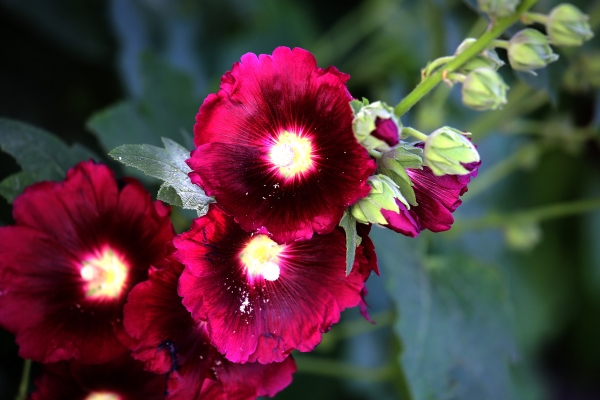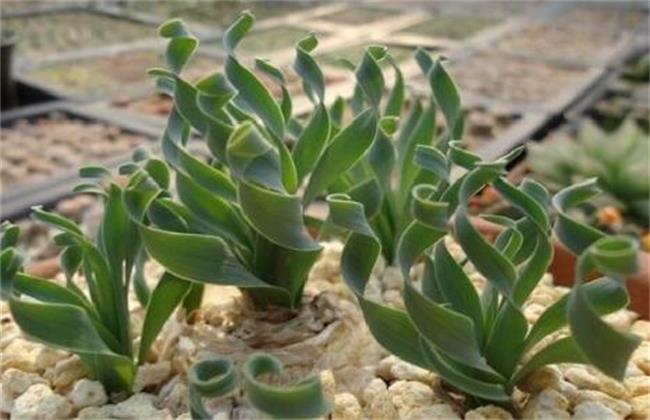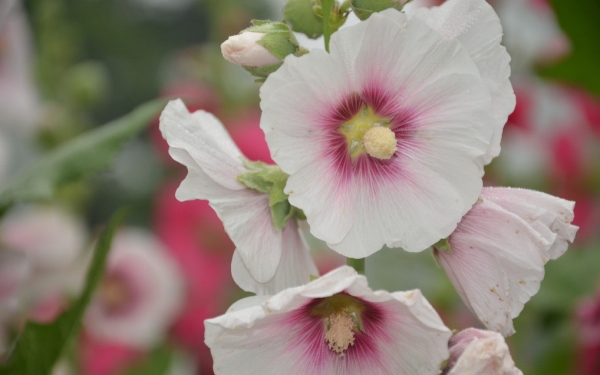Matters needing attention in cultivating hollyhock
In the process of cultivating hollyhocks, in order to prevent hollyhocks from being low and lodging, we need to use Juglans mandshurica as a cone to cut off the roots around the plant around June, cutting the roots every 2-3 weeks, and then watering immediately. When the fruit is yellow and ripe, it should be harvested immediately to avoid seed scattering. after the end of flowering, the aboveground parts of the plant can be cut off and new buds can be sprouted to form tufted plants.

Has everyone learned the method of raising hollyhocks? Compared with other flowers and plants, hollyhock is tenacious and easy to cultivate. If you are also interested, raise a pot at home as soon as possible.
How to raise hollyhock, the breeding method and matters needing attention of hollyhock
Hollyhock originated in southwest China, and now it has been widely planted in many areas of our country. Hollyhock has bright flowers and tall plants, so it is suitable for planting in the courtyard. Hollyhock can not only be cultivated as an ornamental plant, but also has medicinal value. The whole plant is used in medicine and has the effect of clearing away heat and detoxification, relieving cough and diuresis. So, how to raise hollyhocks? Today, the editor will talk to you about the breeding methods and matters needing attention of hollyhock.
How to raise hollyhocks? how to raise hollyhocks
1. Soil selection of hollyhock: hollyhock has strong saline-alkali tolerance, can still grow in soil containing 0.6% salt, and grows well in sandy soil with loose and fertile soil, good drainage and rich organic matter.
2. Watering key points of hollyhock: the flowering period of hollyhock should be watered properly to make it bloom for a long time and bloom well until it reaches the top of the branch.
3. Hollyhocks need plenty of sunlight: hollyhocks like sunshine and withstand half-shade, but grow best under sunny conditions.
4. The growth temperature of hollyhock is not high: hollyhock is resistant to cold and can survive the winter safely in open field in North China.
5. Key points of fertilization for hollyhock: liquid fertilizer should be applied during the growth period of hollyhock seedlings, and attention should be paid to weeding and loosening the soil to promote the healthy growth of the plant. After the bud is formed in the leaf axil, it is necessary to apply phosphorus and potash fertilizer.
6. pest control of hollyhock: red spider damage occurs during the growth of hollyhock, when it is serious, it can be sprayed evenly with 7000 to 9000 times of avermectin EC, or 2500 to 3000 times of 15% abamectin EC has better control effect.
7. Pruning of hollyhock: the trunk of hollyhock should be picked in spring, which can promote branching and dwarf the plant.
Hollyhock leaves are relatively large, a variety of flowers, flowering period is relatively long, is more suitable for planting flowers and plants in the courtyard and other places at home, which will form a landscape and beautify the home environment.
Culture methods and matters needing attention of hollyhock
The flower stem of hollyhock in spring is coring to promote branching and dwarfing the plant. For high-growth varieties, pillars should be set up to prevent lodging. During the growth period, proper topdressing of phosphorus and potassium fertilizer and proper watering can make the flowers big and colorful and prolong the flowering period. If you want hollyhock to bloom for the second time within a year, it can be pruned in time after the first crop of flowers, keeping the lower part of the plant 15-20 cm, and fertilizing and watering in time, it can blossom for the second time in October. After the beginning of winter, the stems and leaves are withered and yellow, and the above parts can be cut off at a distance of 10 cm from the ground.
How to raise hollyhocks, the breeding methods and points for attention of hollyhocks are briefly introduced here. When cultivating hollyhock, it should be noted that hollyhock has strong saline-alkali tolerance and can still grow in soil containing 0.6% salt, but it is not resistant to waterlogging, so it is necessary to avoid stagnant water in the soil. Hollyhocks like an environment with plenty of light, and the soil is even better rich in organic matter.
Culture methods and matters needing attention of hollyhock
Culture methods of hollyhock
Light
Hollyhock likes sunny environment and can withstand semi-overcast.
At ordinary times, hollyhocks should be placed in a place where the sun shines directly and be exposed to sunlight.
Temperature
The hollyhock is hardy, and the upper branches wither and die in winter, but the underground roots can survive the winter in the open field and sprout again next year. You can safely spend the winter in the open field in North China.
The growth temperature of hollyhock is 25 ℃-30 ℃, and the most suitable temperature for flowering is 26 ℃-28 ℃. The monthly average temperature is lower than 17 ℃, and the night temperature is lower than 14 ℃.
Watering
Usually pay attention to watering, keep the soil moist, but not overwatering, hollyhock afraid of waterlogging.
Hollyhocks should be properly watered during flowering so as to prolong flowering period and increase flower quantity.
Soil
Hollyhock has strong adaptability to soil and strong saline-alkali tolerance, and can still grow in soil containing 0.6% salt.
The growth trend is the best in the sandy soil with loose and fertile, good drainage and rich organic matter.
Fertilizer application
Before planting hollyhocks, dig deep into the soil and add base fertilizer to the soil.
During the growth period, liquid fertilizer mainly composed of nitrogen and potash was applied once or twice. After the formation of flower buds, the liquid fertilizer mainly composed of phosphorus and potassium fertilizer was applied once or twice.
Matters needing attention in hollyhock culture
Timely pruning
After hollyhock blossoms, cut off the part of the ground in time, and new buds can sprout.
Summer shade
In summer, due to strong light, hollyhocks should not be exposed to the sun as far as possible, so as not to affect plant growth, should be properly shaded, absorb scattered light.
Control plant height
In order to dwarf the plant, the height can be controlled by root cutting, that is, the root system can be cut vertically at the left and right 10 cm of the plant root during the growth period, and then cut again 3 weeks after cutting.
The more times the root is cut, the shorter the plant will be, which is suitable for potted plants.
- Prev

Culture methods of Spring Grass
Light spring grass likes to grow in places with light, sufficient light can meet the growth needs of spring grass, make it circle and twist, and has high ornamental value. If the light is not enough, the leaves will be thin, curly and unornamental. But in the hot summer,
- Next

Propagation methods of hollyhock
Sowing and propagation of hollyhock are mainly carried out by sowing and reproduction. we generally choose to carry out in autumn, select fertile soil, and apply rotten compost in the soil as base fertilizer, sow the seeds, water to keep the soil moist, and take good measures to keep the soil moist in winter. it can take root and sprout in spring.
Related
- Fuxing push coffee new agricultural production and marketing class: lack of small-scale processing plants
- Jujube rice field leisure farm deep ploughing Yilan for five years to create a space for organic food and play
- Nongyu Farm-A trial of organic papaya for brave women with advanced technology
- Four points for attention in the prevention and control of diseases and insect pests of edible fungi
- How to add nutrient solution to Edible Fungi
- Is there any good way to control edible fungus mites?
- Open Inoculation Technology of Edible Fungi
- Is there any clever way to use fertilizer for edible fungus in winter?
- What agents are used to kill the pathogens of edible fungi in the mushroom shed?
- Rapid drying of Edible Fungi

